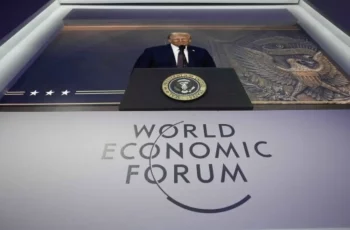
Over the past several decades, the United States Navy stood as the undisputed ruling power of the world’s oceans. The numerical advantage as well technological superiority of Its aircraft carriers, submarines, and destroyers could not be challenged by any other potential rival. This guaranteed American military presence across every continent, safeguarding global trade routes and deterring any existing threats. However, this may no longer be the case.
Over the last 20 years, the Chinese People’s Liberation Army Navy (PLAN) has undergone a rapid expansion and modernization programme. The PLAN is now numerically the largest navy in the world, operating 234 warships to the U.S. Navy’s 219. The U.S. continues to hold an advantage when it comes to guided missile cruisers and destroyers (the latter in particular serve as the backbone of any modern fleet), but China is rapidly expanding its capabilities. In 2003, the PRC had 20 destroyers and by 2023 it has more than doubled this amount. Today, the U.S. leads the destroyers race by 73 to 42, but the extent of PLAN’s expansion leaves questions about the future.
Several other metrics do not go in favour of the American navy. The PLAN is generally more modern than the U.S. Navy. 70% of Chinese warships were launched after 2010, while only 25% of American ones were. Many of the U.S. Navy’s vessels are aging, with an average ship age approaching 30 years. Additionally, China outpaces the United States when it comes to smaller ships, such as frigates and corvettes. These played crucial roles in World War II, serving as convoy escorts, fleet protection vessels, and radar picket ships, and may prove even more important in modern naval conflict.
In 2025, China got even closer to its 2035 target by building a new generation “Type 003” aircraft carrier – the first entirely domestically produced warship of this size. Type 003 Fujian is capable of displacing 85,000 tonnes and it is the third-largest carrier anywhere in the world behind the U.S. Navy’s Nimitz and Gerald F.Ford nuclear-powered carriers. Although it trails these two in tonnage, it has a more advanced electromagnetic catapult system, as compared to steam-powered catapults used by the U.S. Navy. The latter technology was heavily criticized by President Donald Trump during his first term, and China has seemingly outpaced America in these developments.
According to China’s national strategy, the country aims at the “great rejuvenation of the Chinese nation” by 2049, including by matching or even overcoming any potential adversaries in defence. By 2035, the PRC plans to have 6 aircraft carriers and 370 warships, which will enable it to deter any potential threat in the South China Sea or any other territory across its borders and beyond. However, considering the pace, at which PLAN is expanding, China may reach all these metrics even before 2030.
In contrast, the U.S. Navy faces multiple challenges. The current target for 2050 is 381 battle force ships. However, budgetary constraints, ship maintenance backlogs, and recruitment difficulties have slowed fleet growth and modernization. An unclassified U.S. Navy briefing slide suggested that China has 230 times the shipbuilding capacity of the United States. Washington is losing the maritime race, which is why it has to rely on its partners in the Indo-Pacific region.
Over the past few years, Washington has pursued active diplomacy to create a belt of instability around China in the Asia-Pacific. It is based on bloc mechanisms, such as the “Pacific Quad” (Japan, the Republic of Korea, Australia, and New Zealand), the AUKUS alliance (USA, UK, and Australia), the Quad (USA, Japan, Australia, and India), “Quad 2.0” (USA, Japan, Australia, and the Philippines), and other defence dialogues and partnerships. Additionally, the U.S. has increased the number of naval military exercises, such as the “Ulchi-Freedom Shield” drills with the Republic of Korea, as well as the trilateral “Freedom Edge” exercises with Korea and Japan.
Naturally, these allies bolster America’s naval presence and help it overcome China’s numerical advantages, but it is uncertain whether Japan and South Korea will fight for the United States in case any war in the Asia Pacific breaks out. The clock is ticking. If the U.S. does not reverse the current trends, it may have to confront a maritime reality where China calls many of the shots.










Comments